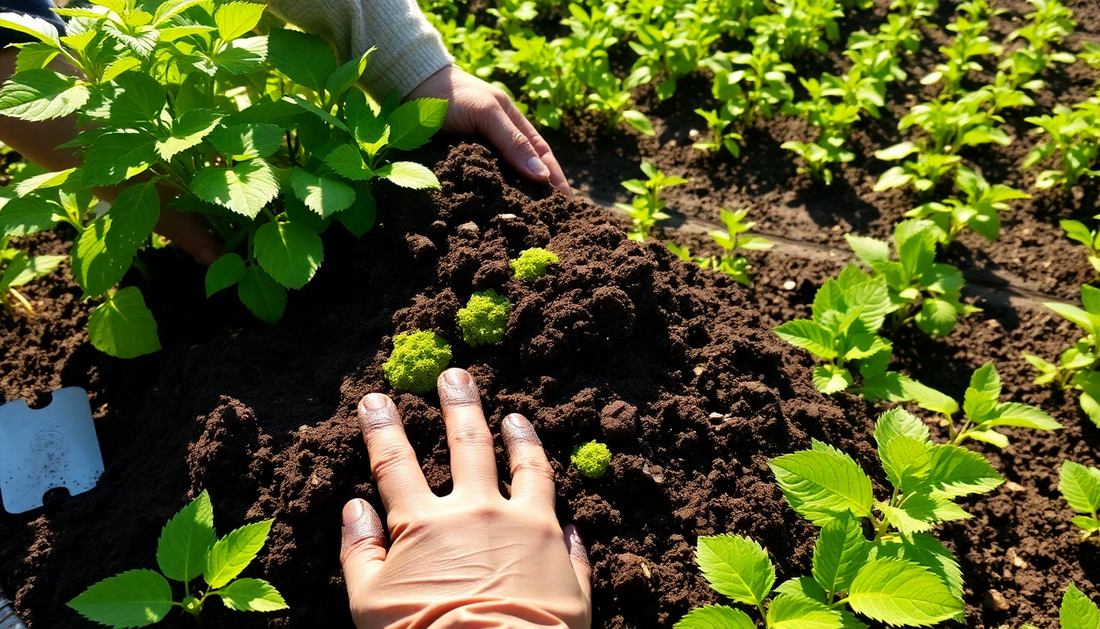
Unlock the Secret to Thriving Plants: Mixing Peat Moss and Compost for Healthier Growth in HSR Layout
As a passionate gardener in HSR Layout, Bangalore, I've discovered the transformative power of blending peat moss and compost to create the ultimate soil mix for my plants. Whether you're tending to a lush indoor garden or nurturing a vibrant outdoor oasis, mastering this dynamic duo can be the key to unlocking your plants' full potential.
In this comprehensive guide, I'll share my insights on the benefits of peat moss and compost, as well as the step-by-step process for crafting the perfect soil blend to help your plants thrive in the unique climate of HSR Layout. Get ready to bid farewell to lackluster growth and hello to a verdant, flourishing garden!
The Dynamic Duo: Peat Moss and Compost
Peat moss and compost are like the yin and yang of the gardening world, each offering unique properties that, when combined, create a powerhouse for plant health. Let's dive into the individual strengths of these two soil boosters:
Peat Moss: The Moisture-Retaining Miracle
Peat moss is a natural, renewable resource derived from partially decomposed sphagnum moss. It's renowned for its exceptional water-holding capacity, making it a crucial ingredient for maintaining consistent moisture levels in your soil. This is particularly important in the warm, dry climate of HSR Layout, where plants can quickly become stressed without adequate hydration.
In addition to its moisture-retaining abilities, peat moss also helps to improve soil structure, aeration, and drainage – all essential factors for healthy root development and nutrient uptake. By incorporating peat moss into your soil mix, you're providing your plants with a stable, well-balanced foundation for thriving growth.
Compost: The Nutrient-Rich Powerhouse
Compost, on the other hand, is the ultimate source of organic matter and essential nutrients for your plants. Made from decomposed plant and animal materials, compost is a rich, dark-colored soil amendment that infuses your garden with a wealth of beneficial microorganisms, minerals, and trace elements.
When added to your soil, compost enhances its fertility, water-holding capacity, and overall structure. It helps to improve drainage, aeration, and pH levels, creating an optimal environment for your plants to flourish. Compost also serves as a slow-release fertilizer, steadily providing a steady supply of nutrients to your plants over time.
The Perfect Blend: Crafting Your Ideal Soil Mix
Now that we've explored the individual benefits of peat moss and compost, let's dive into the step-by-step process for creating the ultimate soil blend for your plants in HSR Layout.
Step 1: Gather Your Ingredients
To get started, you'll need the following materials:
- Peat moss
- Compost (you can use homemade compost or purchase high-quality bagged compost)
- A large container or bin for mixing
- A garden trowel or shovel
Step 2: Determine the Ratio
The ideal ratio for a peat moss and compost blend is typically 50/50. This means that you'll want to use equal parts peat moss and compost in your mix. However, you can adjust the ratio based on your specific soil conditions and plant needs.
If your soil is heavy or clay-based, you may want to increase the amount of peat moss to improve drainage and aeration. Conversely, if your soil is sandy or well-draining, you can lean more heavily on the compost to boost nutrient content and water-holding capacity.
Step 3: Mix and Blend
In your large container or bin, start by adding a layer of peat moss. Top it with an equal layer of compost, then use your garden trowel or shovel to thoroughly mix the two ingredients together. Continue alternating layers and mixing until you've incorporated all of your peat moss and compost.
Be sure to mix the ingredients thoroughly, ensuring that the peat moss and compost are evenly distributed throughout the blend. This will create a homogeneous, nutrient-rich soil that your plants will love.
Step 4: Adjust pH (Optional)
Depending on the specific needs of your plants, you may want to test the pH of your soil mix and make any necessary adjustments. Peat moss can sometimes lower the pH, making the soil more acidic, while compost can help to balance it out.
If your soil mix is too acidic, you can add a small amount of lime or dolomitic limestone to raise the pH. Conversely, if the pH is too high, you can incorporate a bit of sulfur or aluminum sulfate to lower it.
Step 5: Incorporate into Your Garden
Once you've created your perfect peat moss and compost blend, it's time to incorporate it into your garden. Depending on your planting needs, you can use this mix as a top dressing for established plants, or incorporate it into the soil when planting new seedlings or transplants.
Be sure to mix the soil blend thoroughly into the existing soil, ensuring a seamless transition for your plants. This will allow the roots to easily access the nutrients and moisture-retaining properties of your custom-blended soil.
Unlocking the Secrets of Thriving Plants in HSR Layout
By mastering the art of blending peat moss and compost, you'll be well on your way to cultivating a lush, vibrant garden in the unique climate of HSR Layout, Bangalore. This dynamic duo will provide your plants with the perfect foundation for robust growth, helping them to thrive and flourish throughout the seasons.
Remember, the key to success lies in finding the right balance for your specific soil conditions and plant needs. Experiment with different ratios, monitor your plants' progress, and make adjustments as necessary. With a little trial and error, you'll soon discover the perfect peat moss and compost blend that will transform your garden into a verdant oasis.
So, what are you waiting for? Grab your gardening gloves and get ready to unlock the secrets of healthier, happier plants with this powerful soil-boosting combination. Happy gardening!







No comments